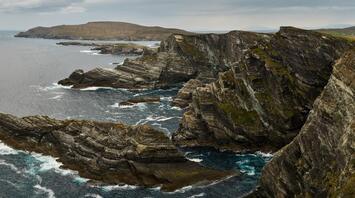Exploring Ireland's Protected Coastline: Wildlife, History, and Sustainable Tourism

A significant portion of Ireland's Kerry coastline and nearby Atlantic Islands has been officially designated as a protected marine park. This area, covering approximately 70,000 acres, is renowned for its rich wildlife, including various seabirds, dolphins, and even sharks. Skellig Michael, once a monastery, is now a UNESCO World Heritage site and draws visitors with its unique history and natural beauty.
The purpose of creating this park is to preserve the diverse ecosystems and provide a safe environment for rare species. Tourists can enjoy whale watching, particularly in the autumn when these animals are most active near the coast. In addition to the wildlife, the region offers visitors the chance to explore historical ruins and admire scenic landscapes.
Travelers looking for similar vacation spots can visit the Cliffs of Moher in County Clare, where breathtaking views of the Atlantic and birdwatching opportunities await. Another popular destination is the Giant's Causeway in Northern Ireland, where the iconic basalt columns, also a UNESCO World Heritage site, attract tourists from all over. Both locations offer unforgettable experiences for those who appreciate a mix of natural beauty and history.
Another great alternative is the Dingle Peninsula in County Kerry, known for its cultural heritage and stunning ocean views. This place is also famous for its ancient ruins and traditional Irish culture, making it ideal for visitors who want to immerse themselves in Ireland's history. The Dingle Peninsula also offers numerous hiking trails for outdoor enthusiasts.
The creation of this new marine park reflects Ireland’s commitment to preserving the environment and supporting biodiversity. Declaring this area as protected promotes eco-tourism and highlights the importance of responsible travel to safeguard nature. This move will ensure the preservation of unique natural resources and heritage for future generations.
For travelers, this means new opportunities for eco-friendly travel and exploring Ireland’s picturesque landscapes. The protection of these areas allows tourists to enjoy the wildlife and historical landmarks while contributing to responsible tourism. Thus, Ireland becomes an even more attractive destination for nature and culture lovers.



















